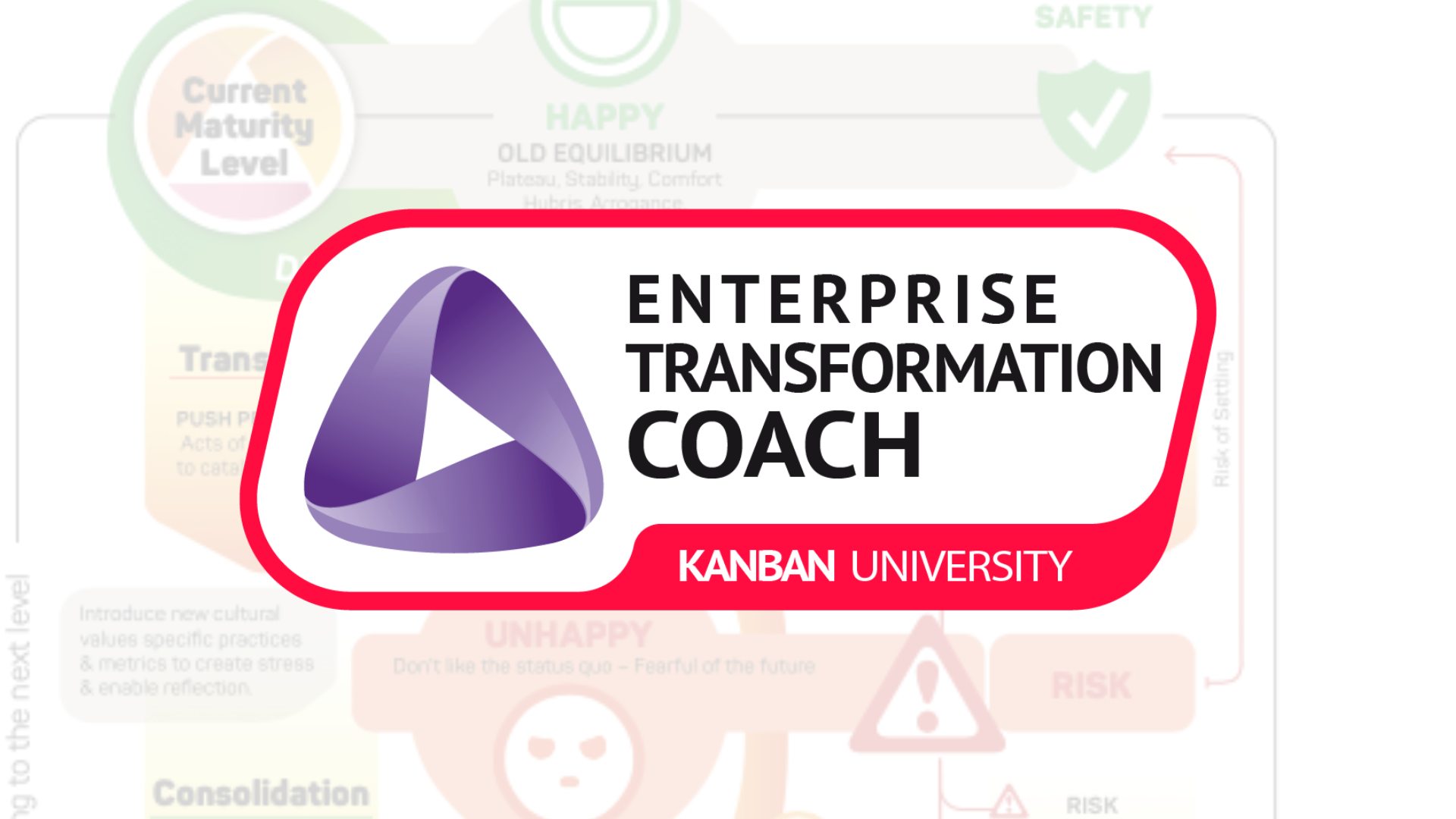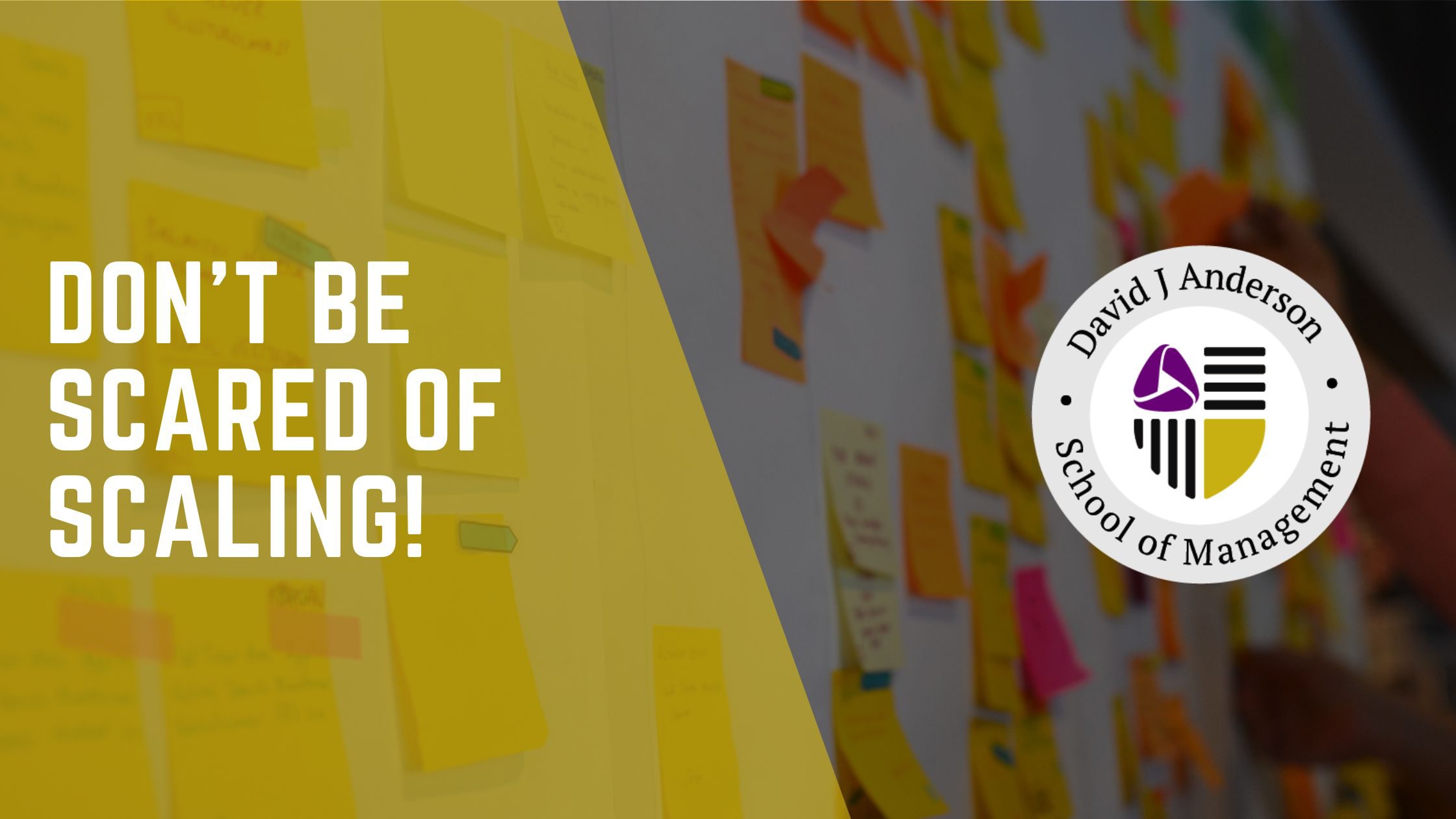New Recipe for Success
In 2010, I published the Recipe for Success in Kanban – Successful Evolutionary Change for Your Technology Business. Ten years later, I´ve been rethinking my approach, and reacting to the poor advice I see from the Agile movement, obsessed with reorganizations, and disruptive, dramatic social change that only slows businesses down, a magical game of musical chairs that gives the appearance of doing something about organizational agility, and service-delivery capability. Rather than reorganizing, you should lead with purpose, create customer-centric metrics, implement feedback loops, and hold people accountable.
The Original Recipe for Success
My advice in 2010 was aimed at first and second-line managers who were tasked with delivering professional services work such as software development. Often, skilled practitioners, when promoted into a management position, these people are given little training, and almost no mentoring or guidance. They must learn new skills quickly or they will struggle. Often someone who was highly competent feels suddenly hugely incompetent and their self-esteem suffers as consequence. This dents their confidence, which affects how people trust them. A lack of trust adds constraints, and a vicious cycle ensues. To break out of this, my advice to new managers was…
- Focus on quality
- Reduce work-in-progress
- Deliver often
- Balance demand against capability[1]
- Prioritize
- Attack sources of variability to improve predictability
This advice was intended to help new managers gain a sense of achievement, boost their self-esteem, build confidence, and consequence build trust. This turns a vicious cycle into a virtuous cycle and sets them on a path to success and hopefully promotion and greater responsibilities in future. Let´s look at these six elements briefly…
Focus on quality – improves customer satisfaction, reduces rework, improves predictability, improves trust with customers
Reduce work-in-progress – improves focus and reduces multitasking, improves predictability, and improves quality, relieves workers of overburdening, improves employee engagement, and improves trust with customers
Deliver often – improves trust with customers, delivers value more frequently, reduces opportunity cost of delay, improves economics, improves customer satisfaction, improves trust
Balance demand against capability – relieves the delivery workflow from overburdening, improves quality, reduces lead time, improves predictability, improves trust
Prioritize – easier said than done (well), reduces anxiety over balancing demand against capability and reducing work-in-progress.
Attack sources of variability to improve predictability – builds trust, improves economics, enables greater efficiency
With my recent work on the Kanban Maturity Model, and the development of the Organizational Maturity levels, I can now see that this list of six is spread across several maturity levels ranging from the easier, simpler, shallower maturity of reduce work-in-progress, and focus on quality, through mid-levels of deliver often and balance demand against capability, to deeper and more challenging capabilities of prioritizing effectively and identifying and reducing sources of variability (requires finding new ways of working, as well as a deeper understanding of types and causes of variability).
Meanwhile, inexperienced managers in professional services industries, under pressure to perform, are being advised to reorganize into pods, squads, guilds, cross-functional teams, chapters, and release trains. Rearranging the deck chairs on the Titanic! It gives the impression of doing something in a crisis.
So, it´s time for some new advice and guidance, a new recipe for success. Stop reorganizing and instead encourage cooperation in your organization, create alignment, and deliver on customer needs. You don´t need to reorganize, you need to create social capital so that people work better together. Here is how to do it…
The New Recipe for Success
From our work developing the Kanban Maturity Model, we studied the challenges of why and how organizations struggled to adopt practices that lead to improvements. Culture is often cited as the top reason why practices were resisted in organizations. Culture is the product of behaviors and actions, and these are driven by values. To change the culture, you need to lead with values. To drive adoption of new values, you need leadership. A lack of leadership is at the core of why organizations struggle to improve their capabilities and outcomes. While leadership development is a deep and challenging topic and one that most organizations ignore, you can go a long way to catalyzing acts of leadership at all levels in an organization, by holding people accountable. Accountability is the secret to unleashing the latent leadership in your organization, driving cultural change, and ultimately adoption of practices that improve agility, resilience, customer experience, and your economic performance. The New Recipe for Success is intended to drive accountability in your organization, improve trust and social capital, increase cooperation across organizational units, and produce the improvements in agility, customer satisfaction, resilience, and innovation that you´ve been looking for.
- Lead with purpose
- Create customer-centric metrics
- Implement feedback loops
- Hold people accountable
Let´s look at these in turn…
Lead with purpose
Define goals that are meaningful to the success of your business. What is the mission of your business, your business unit, your project? Why do you exist as a business? What is your purpose? Why do your customers come to you? What are their reasons for selecting you? What is their purpose? What expectations do they have? And what outcomes do they expect? You need an outcome-driven organization. Define the outcomes you expect and measure your performance against those expected outcomes.
Everyone should understand the purpose of their work, and the outcome that they are contributing towards. Those outcomes should be meaning to the mission of your business and meaningful to your customers – a customer should recognize that outcome you are striving for, as something that is valuable to them.
Create customer-centric metrics
Given your customer´s purpose and expectations, what is that they care about? Timely delivery? Fast delivery? High quality? Affordability? Convenience? Ease of use? Choice, optionality, adaptability, or reconfigurability? These are the common things customers care about. What do your customers care about? Define your anticipated outcomes based on what your customers care about. Create metrics that reflect these customer concerns. Aim to meet your customers´ expectations.
Together with Alexei Zheglov, I wrote a book about this, Fit for Purpose – how modern businesses find, satisfy, and keep customers. We teach classes on how to create the right metrics to drive desirable evolutionary change in your organization – metrics that align people across organizational units and drive the cooperation you need to fulfill customer expectations.
Implement feedback loops
Metrics are useless unless you take the time to reflect on them – to compare your goals, your customer expectations, with your current capability and performance. In the Kanban Method, we have several of these reviews designed to hold people, at different levels in an organization, accountable for achieving expectations. These are…
- Flow Review / Service Delivery Review
- Operations Review
- Strategy Review
Some other feedback mechanisms exist in Kanban that have a secondary but still important role to play in accountability…
- Replenishment Meeting
- Delivery Planning Meeting
- Risk Review
Much of the failings I see in organizations can be fixed by measuring the right things, implementing a feedback loop to reflect on the measurements and metrics, and holding people accountable. So often I hear, ¨We´ve been doing Agile for years now but our customers continue to complain that we are too slow and unpredictable. ¨ So I ask them: ¨Are you tracking lead time from customer commitment to delivery? ¨ No, we don´t do that!
¨Do you have a feedback loop, a review or retrospective where you compare customer expectations with your delivery times? ¨ No, we don´t have that either!
¨Are managers being held accountable for meeting customer expectations? ¨ What do you mean exactly?
This simple formula of measure and report things that customers care about, implement a feedback mechanism to reflect upon your current capability, and hold managers accountable, will fix most problems – you don´t need to reorganize and you almost certainly don´t need an Agile framework or methodology.
Hold people accountable
I recently blogged about the power of accountability to catalyze leadership. My colleagues in our European office in Bilbao, tell me that ¨accountability¨ cannot be translated into Spanish, as the translation means ¨the person that is responsible for¨ and hence, responsibility and accountability are the same thing in Spanish and Latin culture. This requires just the briefest of thoughts to resolve. Someone who is ¨responsible for¨ doing the work, responsible for the activity, even the output, isn´t the same as someone who is ¨responsible for¨ the outcome. This is the essence of accountability – accountability is responsibility for an outcome.
Your organization needs to be outcome driven. Lead through the definition of outcomes that are aligned with customer needs, and the mission of your business. Define outcomes, measure and report metrics that align with the outcome, implement feedback loops to reflect on actual versus desired outcomes, and hold people, at all levels in your organization, accountable for those outcomes.
Enabling the New Recipe for Success
We teach classes on how to define outcome-driven metrics using the Fit For Purpose Framework, and how to implement the appropriate feedback loops to drive evolutionary change in your organization in our Kanban Systems Improvement (KSI) and Kanban Maturity Model (KMM) curricula. Stop reorganizing. Stop disrupting people with dramatic social change across your organization. Learn to lead with purpose, develop outcome-driven, customer-centric metrics, implement the right feedback loops, in order to catalyze leadership by holding people accountable – evolve to a fitter-for-purpose organization that delights your customers, fully engages your employees, changes your culture, and delivers successfully on your mission and purpose.
Footnotes
¨Balance demand against capability¨ was originally published ¨Balance demand against throughput¨ and changed soon afterwards (2010) in our training material to use plainer, simpler, and more general language.
This article was inspired by Travis Birch, ¨You don´t need to reorg, you just need service-oriented managers¨. I felt it would be good to make this concept actionable.
https://medium.com/@travisbirch/you-dont-need-a-reorg-you-just-need-service-oriented-managers-9710b31c9772





